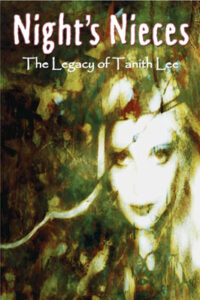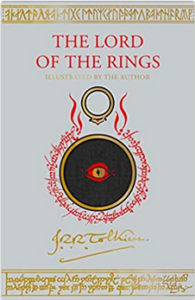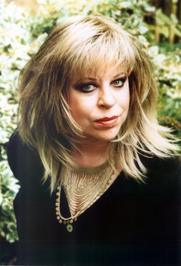
I have four works in this beautiful anthology, including poems and short stories. Here’s the blurb:
In the footsteps of the High Priestess of Fantasy… Tanith Lee – 1947-2015 – was a huge influence on fantasy literature, and a towering inspiration to a generation of writers, who were captivated by her iconic, poetic prose, her deft use of language, her surreal visions and her ground-breaking ideas.
Many successful authors claim that discovering the work of Tanith Lee encouraged them to write in the first place. In particular, she was instrumental in giving women writers the confidence to break the staid moulds of the genre – to be evocative, sensual and daring in their work, to smash boundaries.
Its title inspired by Tanith’s Flat Earth sequence of books, (in particular Night’s Master), Night’s Nieces is a collection of stories by female writers, who not only counted Tanith Lee as a close friend, but also as a mentor, a teacher and an inspiration. Tanith, having no children herself, considered these younger women to be her ‘nieces’ and offered her support to their writing. While the ‘nieces’ included in this book do not encompass all of Tanith’s close writer friends – for she had many – it amply provides a sample of her legacy.
Each ‘niece’ has written a short story inspired by Tanith’s work, as well as an accompanying article describing how Tanith influenced her career and sharing fond memories of her friendship. The book also includes previously unpublished photographs from Tanith’s life, as well as artwork by the authors.
Contributors include Storm Constantine, Cecilia Dart-Thornton, Vera Nazarian, Sarah Singleton, Kari Sperring, Sam Stone, Freda Warrington and Liz Williams. With an introduction by John Kaiine.






 This, for me, is an essential writing tip!
This, for me, is an essential writing tip!



 The Silver Metal Lover
The Silver Metal Lover Alan Lee
Alan Lee